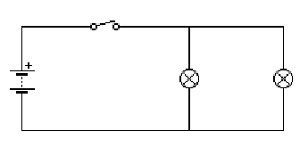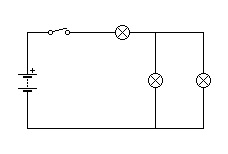SERIES, PARALLEL AND COMBINATION CIRCUIT
SERIE
An electric circuit connected so that current passes through each circuit element in turn without branching.
 |
|
PARALELO
A single electric power source supplies all the lights and appliances with the same voltage.
 |
|
MIXTO
The combination or compound circuit involves the dual use of series and parallel connections in a circuit.
 |
|